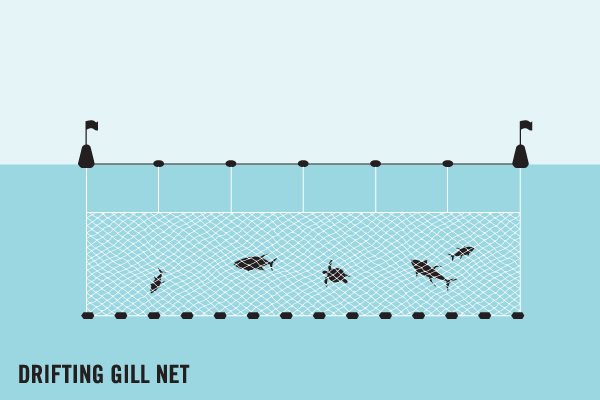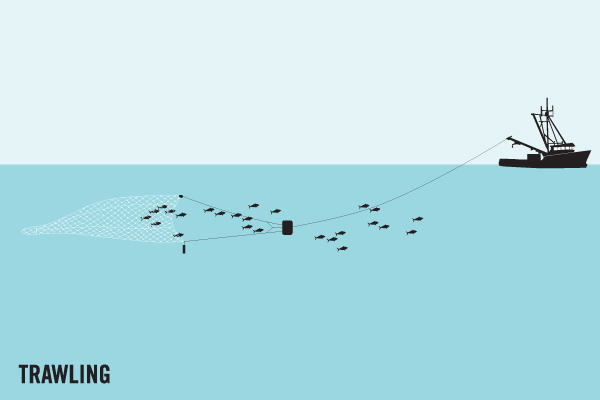Average Weight/Length
Averages 1-3 pounds in most coastal waters of Florida, with catches to 6 or 7 pounds always possible, especially around major inlets, passes and jetties on both coasts. During runs of big fish, generally in the spring, Floridians have taken blues as heavy as 20 pounds or so. World record 31 pounds,
Other "Popular" Names for this Fish
Blue, Chopper, Anchoa
Location Habitat
Bluefish live in temperate and tropical coastal oceans around the world, except in the eastern Pacific. On the East Coast, bluefish are found from Maine to eastern Florida. Bluefish gather together by size in schools that can cover tens of square miles of ocean, equivalent to 10,000 football fields. They migrate seasonally, moving north in spring and summer as water temperatures rise and then south in autumn and winter to waters in the South Atlantic Bight. Bluefish release their eggs in the open ocean. Once hatched, larvae develop into juveniles near the surface in continental shelf waters and eventually move to estuarine and nearshore shelf habitats. Juveniles prefer sandy bottoms but will also inhabit mud, silt, or clay bottoms or vegetated areas. Adults live in both inshore and offshore areas and favor warmer water.
Biology & Physical Description
Bluefish are blue-green on the back and silvery on the sides and belly. They have a prominent jaw, with sharp, compressed teeth. Bluefish have a moderately long life, up to 14 years. They grow fast, up to 31 pounds and 39 inches. They’re able to reproduce at age 2, when they’re 15 to 20 inches in length. Depending on their size, females can have between 400,000 and 2 million eggs. Bluefish spawn multiple times in spring and summer. Bluefish exhibit feeding behavior called the “bluefish blitz,” where large schools of big fish attack bait fish near the surface, churning the water like a washing machine. They feed voraciously on their prey, eating almost anything they can catch and swallow. Bluefish have razor-sharp teeth and shearing jaws that allow them to ingest large parts, increasing the maximum size of the prey they can eat. They like to eat squid and fish, particularly menhaden and smaller fish such as silversides. Sharks, tunas, and billfishes are typically the only predators large and fast enough to prey on adult bluefish.
Life Cycle & Mating Behavior
Fecundity varies from 400,000 to 2,000,000 eggs depending on the size of the individual (ranging from 370,000 in a 31 cm fish to 1,240,000 in a 54 cm fish). Tailor are serial spawners
Geographic Species Map (Fishbase.org Map)
|
|

|
Summary of Distribution: Circumglobal: In tropical to subtropical waters; except the eastern Pacific. Eastern Atlantic: Portugal to South Africa, including the Mediterranean and Black Sea, Madeira, and the Canary Islands. Western Atlantic: Canada and Bermuda to Argentina. Indian Ocean: along the coast of East Africa, Madagascar, southern Oman, southwest India, the Malay Peninsula, and Western Australia. Southwest Pacific: Australia except the Northern Territory, and New Zealand. Absent from eastern Pacific and northwest Pacific. Barely entering the Western Central Pacific region. Records from the Northern Territory, Australia and from Indonesia appear to be erroneous. Occurrence in Taiwan and Hawaii need verification. |
|
Note: Distribution range colors indicate degree of suitability of habitat which can be interpreted as probabilities of occurrence (fishbase.org) |
|
Sport Fishing Techniques
|
|
Gill netsGill-nets are the dominant gear in the Indian Ocean. Gill-nets are used in artisanal and semi-industrial fisheries, contributing to 30-40% of the total catch. The net design is comprised of continuous panels of uniform mesh size, aimed to trap fish behind the gills. The International Sustainable Seafood Foundation (ISSF) notes that rates of sharks and turtle by-catch in Indian Ocean gill-net fisheries are high.. |
|
|
|
Kite Fishing (Trolling)Kite Fishing Trolling is when you are.... |
|
|
|
River DriftRiver Drift means to use the.... |
|
|
|
TrawlingTrawling is when.... |
|
Tackle & Baits
Light casting and spinning tackle is adequate in most instances, along with surf tackle for beach and pier fishing. Many big fish, during those aforementioned unpredictable runs, will put light trolling tackle to a good test. Heavy leaders are usually necessary to prevent clipoffs by the Blue's sharp teeth. Stout monofilament leaders usually suffice, but wire can be used too.
Game Rating
Game Rating : 8/10
Game Description :
Outstanding fighter at all sizes. Strong runs and frequent jumps.
Food Rating
Game Rating : 7.5/10
Game Description :
Small Bluefish make fine table fare if broiled or pan-fried soon after being landed the same day if possible.
Picture (Fish)
|
|
|
|
|
|
Picture Mount
|
|
Product Specs
Available Sizes: 24 - 37 in
Details: Fired-Enamel Glass Eye
Product Options: Wood Plaque, Custom Base, 360°




















 Bluefish
Bluefish 









